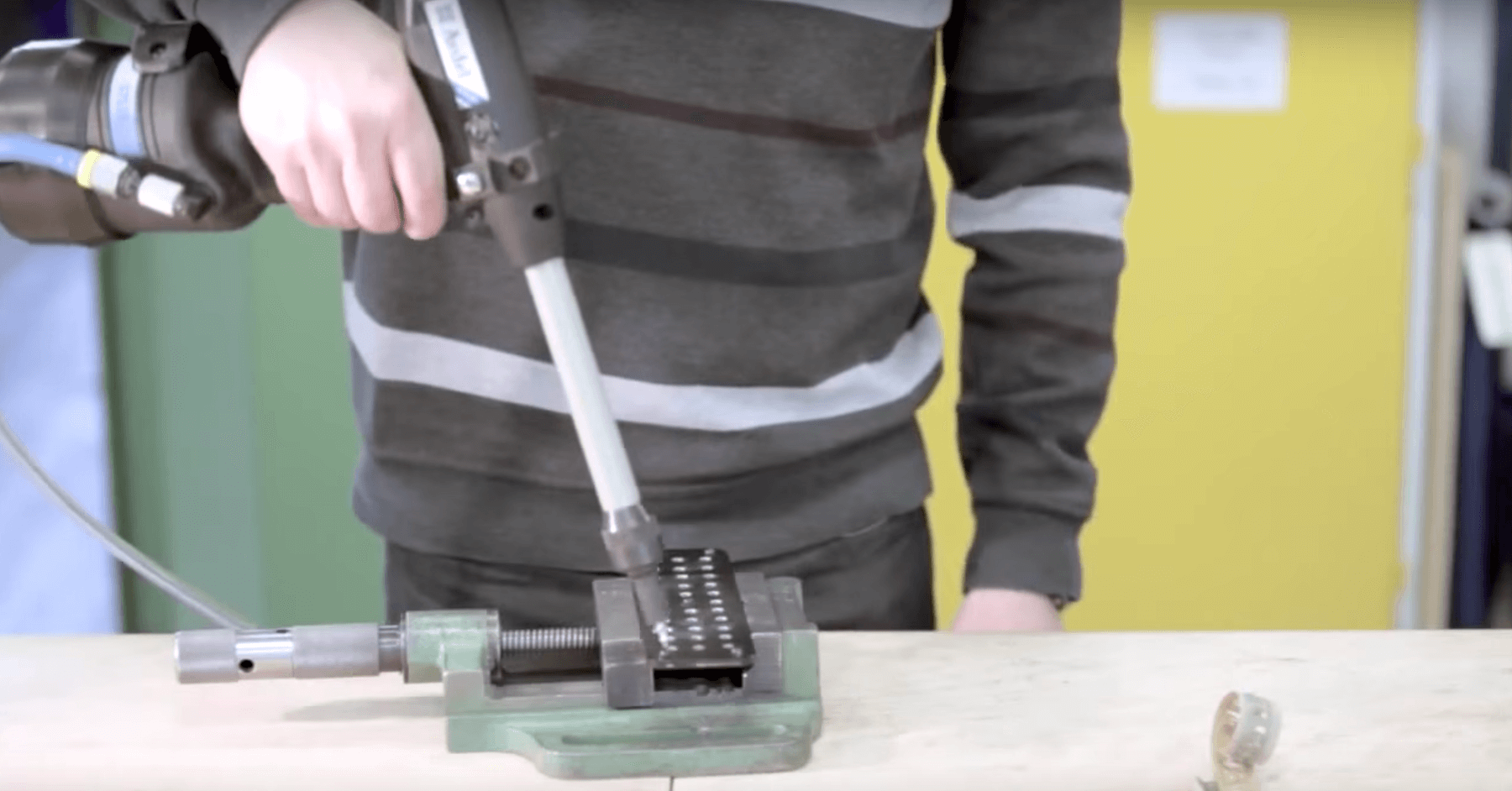
When you have a large assembly job that requires lots of blind rivets, there is nothing like a speed fastening system to shorten time to completion. As a fastener distributor, we work with all types of fasteners and fastener systems, and we have seen how speed fasteners save our customers time and money. And just as it is important to match the right fastener to the job, you also have to match the right speed installation setup to the task.
The Benefits of Speed Fasteners
Speed fastener systems are designed to provide the same efficiency and resiliency as any blind rivet fastener, but setup and set time are substantially faster. With most blind fastener tools, each rivet is placed on the nose piece and then installed. This means the riveting tool needs to be manually loaded prior to each joint. With speed fastening, the repetitive need to load each rivet is eliminated, and multiple rivets are loaded and ready to install one after another. Speed riveting reduces installation cycle time to one to two seconds; a real time saver when you have multiple fasteners for the same job.
Speed fastening tools typically have longer nose shafts to accommodate magazines of preloaded rivets. Speed fastener magazines come preloaded on spindles or in paper strips that can be loaded on the spindle. Once the paper is peeled away, the speed fasteners are ready to go. Once loaded, the speed riveting tool feeds the fasteners one after another; as soon as one rivet is in place, the next one is moved into position, ready to set.
The entire concept behind speed fasteners is to improve overall efficiency. In addition to faster installation, speed fastener magazines reduce component handling, including spilling loose rivets. Also, speed fasteners are designed to exact lengths, so there are no breakstems. That means no metal pieces littering the shop floor or job site and no stems to collect, which also saves time.
The Basic Types of Speed Fastener Tools
Though the concept of blind riveting is relatively simple, there are various tool options that can be applied for different types of installations. You want to match the speed fastener setup with the task to get maximum performance.
There are three basic types of fastener tools:
- Handheld power tools – For small batch projects, handheld fastener tools work quite well. According to Avdel, one of the leading manufacturers of speed fasteners, if you are placing 10 or more rivets at a time, then speed fasteners are more efficient. Handheld tools come with longer shafts, which makes it easier to install rivets in narrow places, and they operate like regular fastener tools, so they require little or no training.
- Workstations – For higher-volume production applications (up to about 1 million fasteners per year), single-head fastener workstations are a logical choice. They are designed for rapid assembly using either a movable or fixed arm for placement.
- Assembly workstations – When you need multiple rivets for synchronous placement, assembly workstations can be invaluable. These workstations are designed to handle two or more fasteners at the same time and can be customized for each manufacturing application.
Avdel by Stanley Engineered Fastening Leads in Speed Fastener Tools
As a fastener distributor, we frequently recommend Avdel tools and fasteners. Avdel has a comprehensive line of speed fastener installation tools, including the below.
- The 7350 handtool can install up to 1,500 fasteners per hour and has a high-capacity magazine, including a bowl-feed option to cut reloading time. It also features a long-reach barrel to get into tight places, and it can be mounted on a balancer.
- The 7357 is a lightweight, handheld fastener tool with an average cycle time of one rivet per second. It is self-contained and runs on battery power, so there is no need for a power cord, making it extremely versatile.
- The 7536 handtool handles a wide range of fastener sizes and comes with an air cursor for small-diameter fasteners. To reduce shock, it uses hydraulics for fastener placement.
- The 7271 is a high-performance handheld tool with a two-second cycle time and high-capacity magazine. This tool also includes a pressure gauge for using fasteners with softer materials.
Avdel also offers a line of speed fastener workstations:
- The Pantograph Workstation has an extendable arm with a reach of more than 0.8 meters and is designed for single-end operation. It can be bench- or floor-mounted.
- The Avdel Fixed-Arm Workstation places the fastener tool on a fixed arm and controls it with a foot pedal control for hands-free operation.
- The Avdel Underbench Workstation is designed to minimize space and is mounted below the workbench. It also uses a foot pedal control and is perfect for precision assembly of smaller components.
Finally, Avdel offers two assembly workstations for high-volume production applications:
- The Avdel Mini-MAS has two heads for parallel assembly, allowing you to position and install rivets in pairs. It has hydraulic riveting modules to eliminate shock. It is designed for a seated worker and uses a foot pedal to operate.
- Avdel’s Multi-Head Assembly Workstation can be set up to accommodate up to 60 fasteners for simultaneous installation. In comes with internal diagnostics and quality control features and is designed to fit into most assembly operations.
When shopping for speed fastener solutions, it pays to work with an experienced fastener distributor who can help you choose the right tool. Bay Supply has one of the largest inventories of fasteners and fastener supplies available, and our experts are always ready to answer questions and help customers make the right product choice. If you want to learn more about speed fasteners and speed fastener installers, contact us for a custom quote. We have the fasteners and tools you need for any job.


Comments